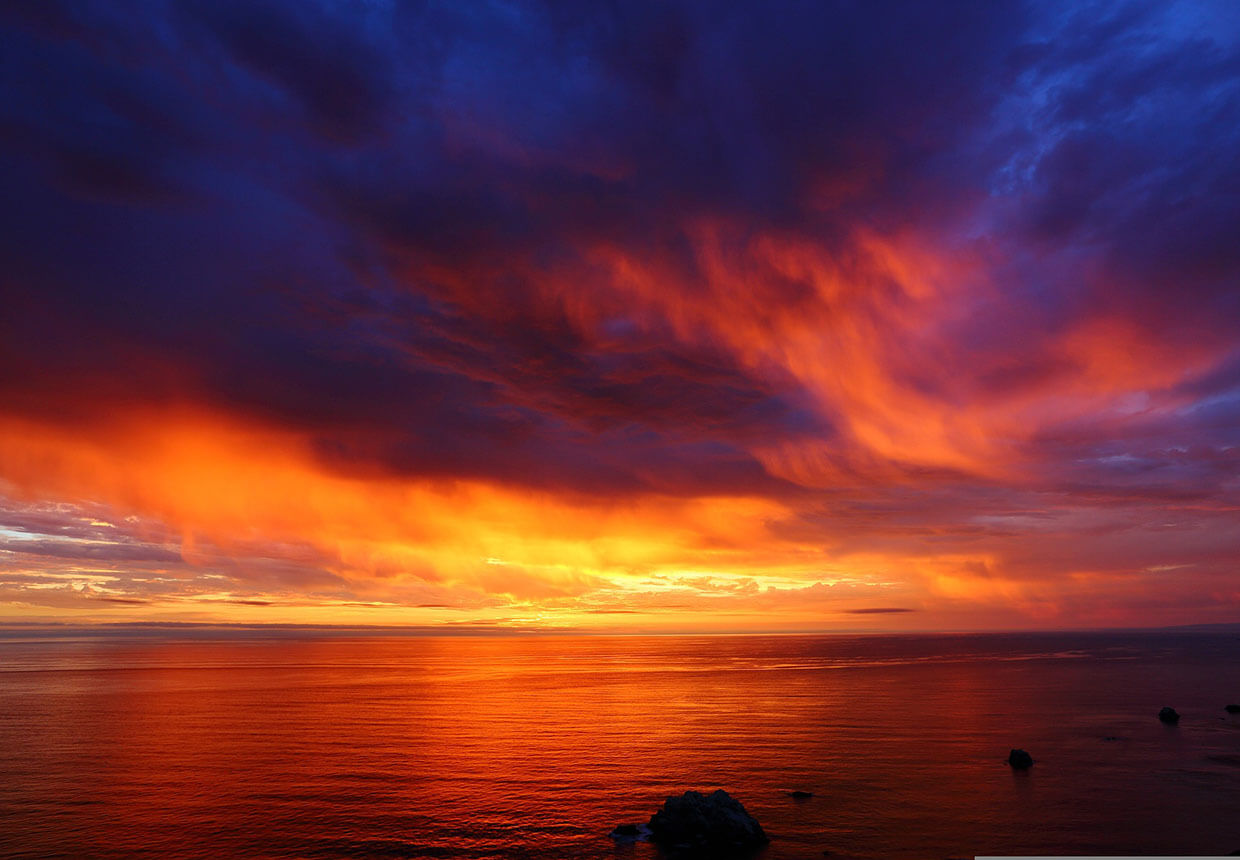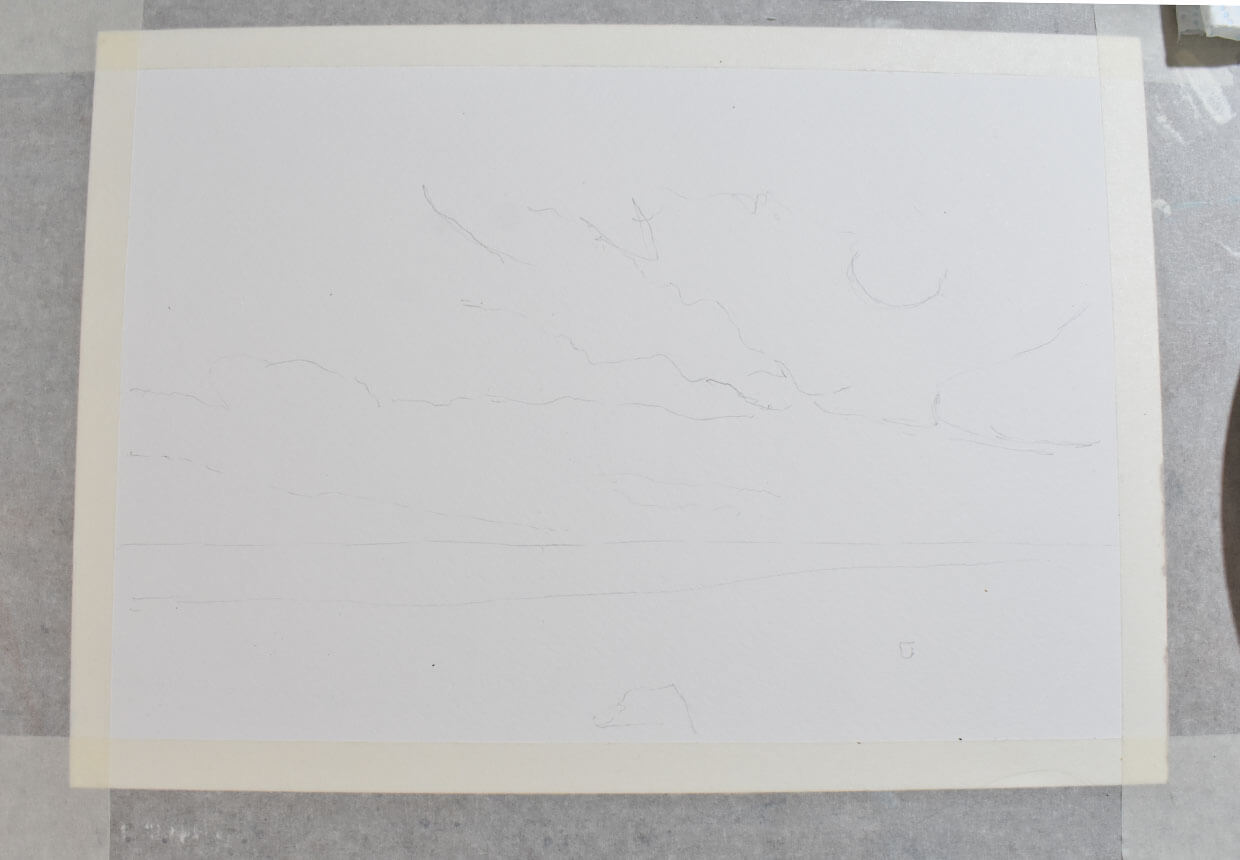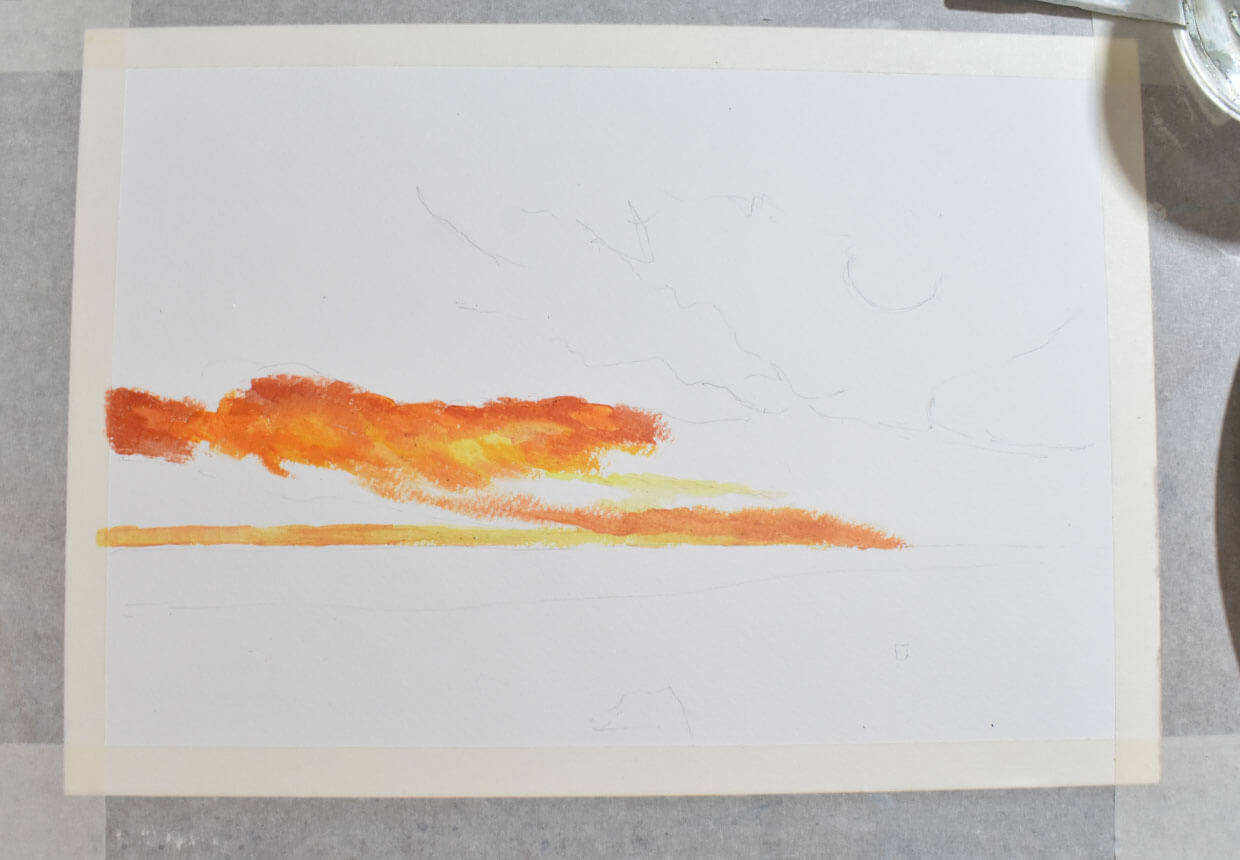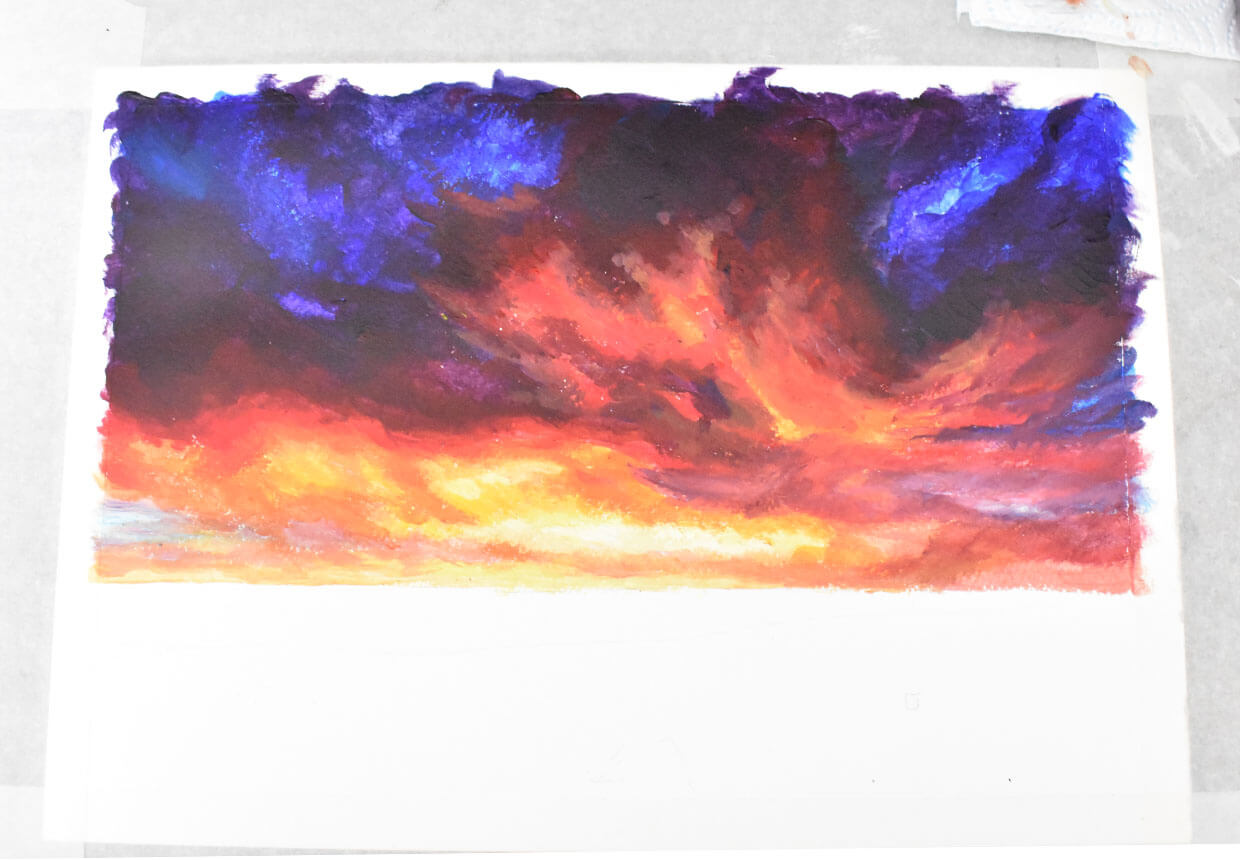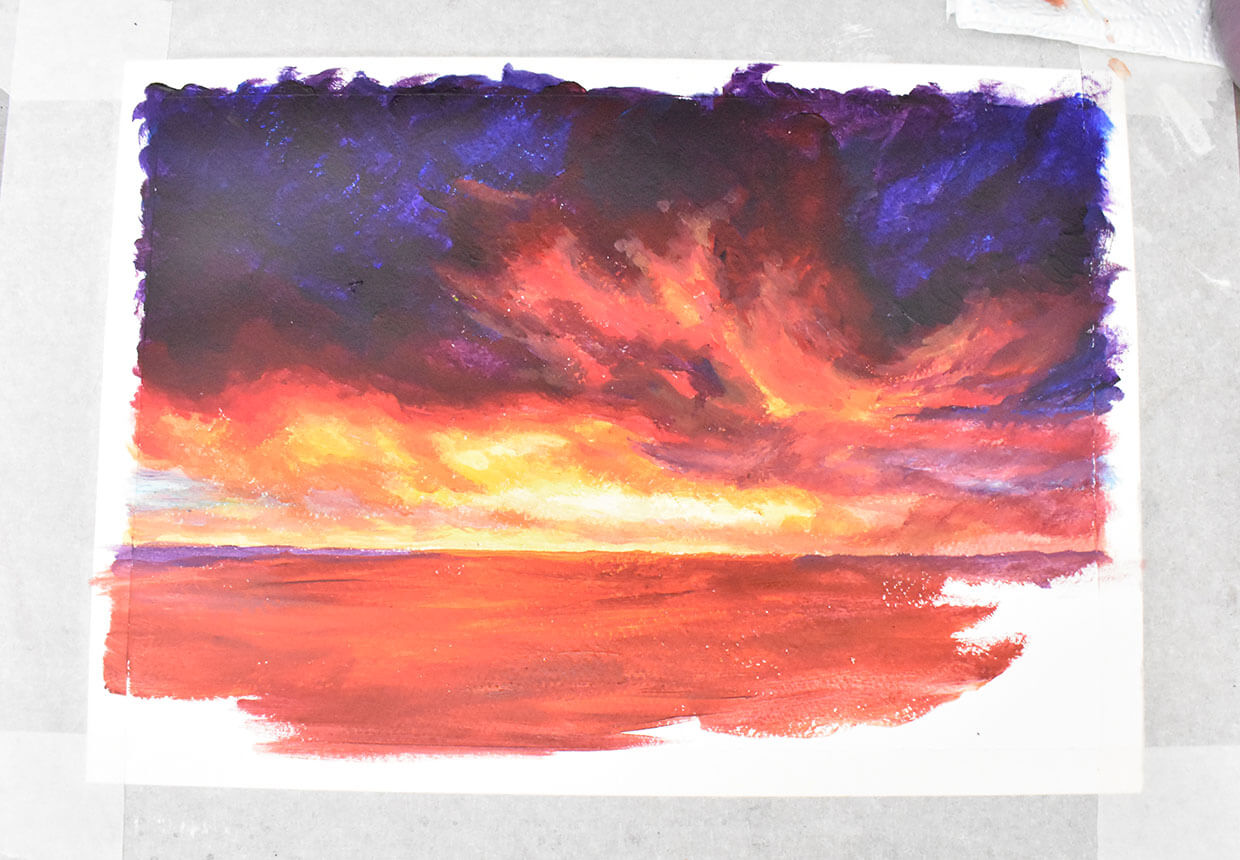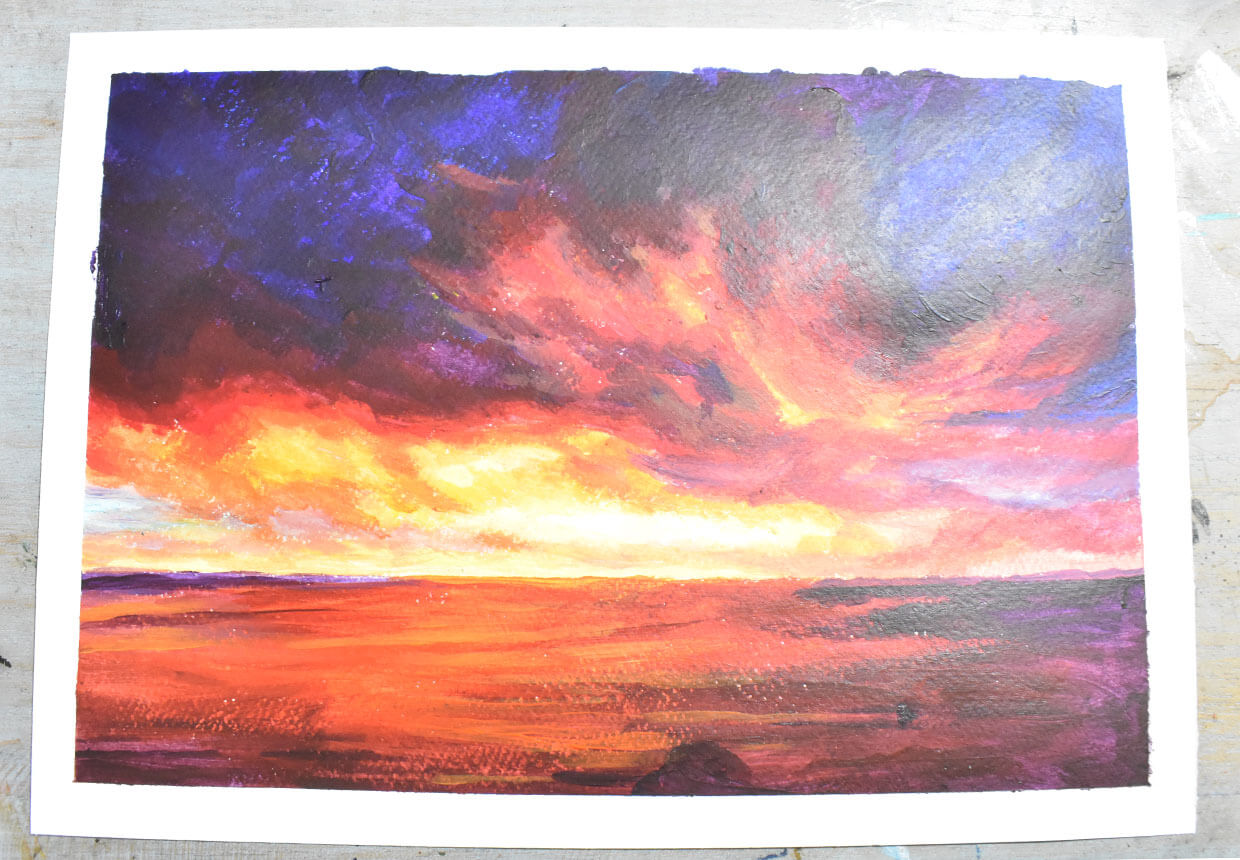Acrylic sunset paintings can capture the unique beauty of one of the most dramatic landscape scenes. Vibrant and fast-drying, acrylic paints can bring the evening sky to life, making a gorgeous set piece for your home.
Every sunset is unique and you’ll notice that they look different at certain times of the year. Autumn and winter sunsets can be particularly striking with fiery colours and dazzling rays bursting through the clouds. Once you try sunset painting, you’re bound to become a dedicated sunset watcher.
Using acrylic paint can seem a little daunting at first – especially as features such as clouds or reflections over water can be a little tricky. So in this easy tutorial, we’ll show you how to approach an acrylic sunset painting, so that you can master the art of recreating the magic of last light.
You’ll learn how to plan your sunset painting, how to blend the paint to create beautiful clouds and how to build up layers of paint in stages.
Top tips for your acrylic sunset painting
If you haven’t used acrylic paints before, it can take time to get used to the medium, but it’s well worth the effort! Get started with these expert tips…
- Acrylics dry really, really quickly: Blending with this type of paint can be difficult. Work with this element of the paint, rather than fighting against it, by painting in lots of layers.
- Blend, then combine colours on your palette: Once you’ve blended two areas of colour, simply combine the two on your palette, and use that colour to blend between them again. This is really helpful when painting features like clouds.
- Start with the lightest areas: If you want an area to be bright, your base layer needs to be bright too. Bear this in mind when painting your sun, the brightest star of every sunset painting!
Materials you’ll need to create an acrylic sunset painting
To create your sunset painting, you’ll need to make sure you have the right art materials. Here are our recommendations:
Liquitex Basics acrylic paints
At the moment, we’re using a Liquitex Basics set. The coverage might be a little bit thinner, but you can get a wide range of colours for an affordable price, and the paints feel nice to use.
It’s also advisable to have a bigger tube of white paint on hand, as you will go through this very quickly.
Filbert paintbrushes
For this acrylic sunset painting tutorial, we’re using filbert brushes (which have a curved, flat tip) for blending colours together and smaller round brushes to add details (such as highlights).
A palette
Your palette is essential for mixing up the right colours before you start painting. It’s especially important for sunset paintings, as you’re going to want lots of subtly different shades for blending.
Canvas or paper
It’s your choice whether you’d prefer to end up with a painting on canvas or paper. If you decide to use paper (like I did for this acrylic sunset painting), look for a minimum of 300gsm or paper that’s for mixed media, so that it doesn’t warp when it gets wet.
We’d recommend buying a pad of mixed media paper from Cass Art, which does a good job of holding the paint.
- Buy mixed media pad now from Cass Art
